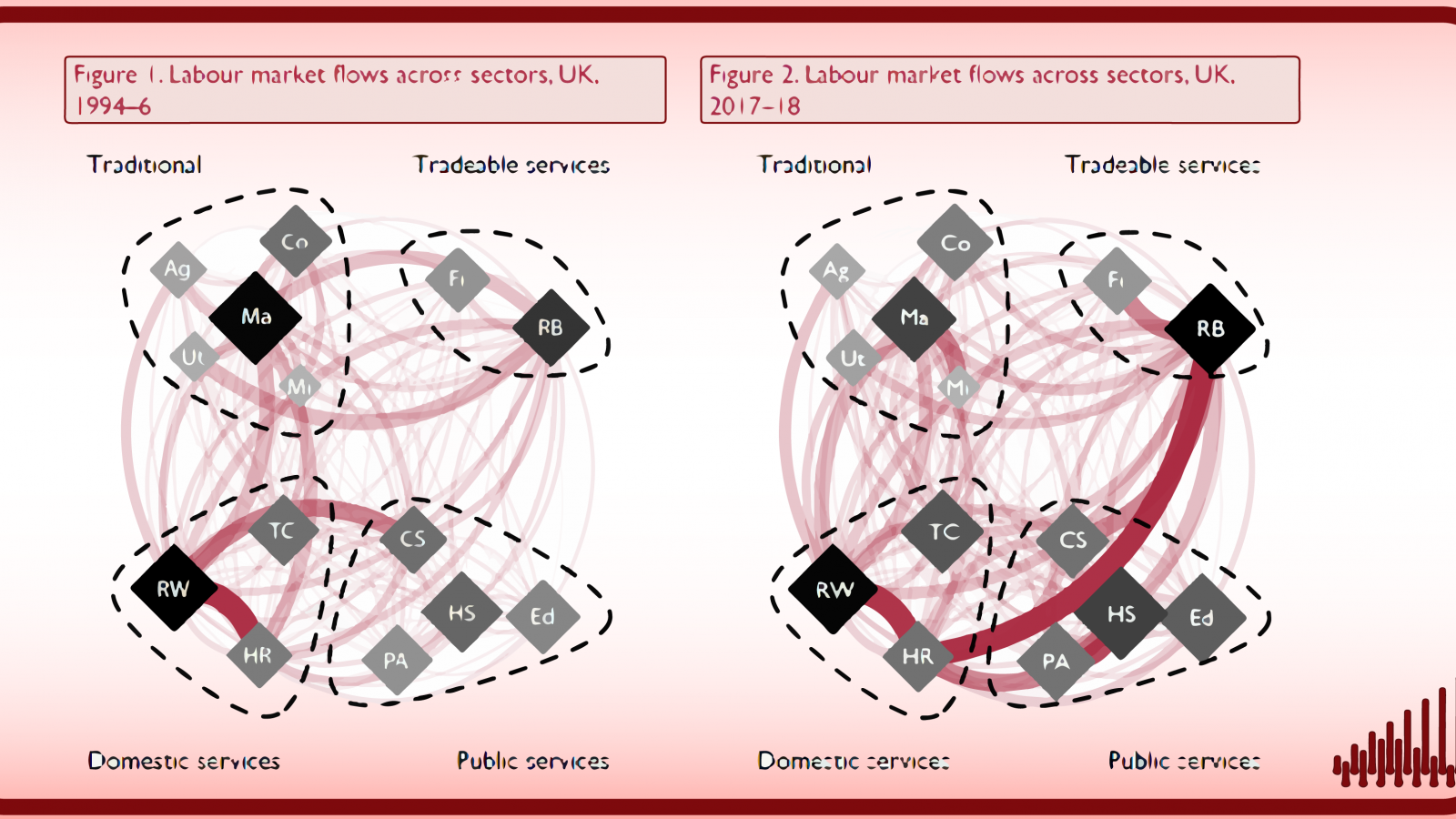- Home
- Publications
- Structural Changes In UK Sectoral Labour Markets And Their Macroeconomic Implications
Structural changes in UK sectoral labour markets and their macroeconomic implications
 Pub. Date
Pub. Date
 Pub. Type
Pub. Type

Downloads
Labour market boxRelated Themes
Macro-Economic Dynamics and PolicyThis is a preview from the National Institute Economic Review, February 2019, no 247.
The UK labour market has become more interconnected. What are the macroeconomic implications of this trend?
In order to understand trends in aggregate labour market outcomes, such as wage and productivity growth and collective bargaining, it is important to look at sector-level developments and labour dynamics between sectors. In this Box, prepared by NIESR’s Nathaniel Butler-Blondel and Arno Hantzsche, we introduce new measures of cross-sectoral employment flows. We find that a rebalancing towards more productive sectors partly offset a slowdown in productivity growth while average wage dynamics are associated predominantly with sector-specific trends. Sectors that are more connected with other sectors tend to have lower union density.
Related Blog Posts



Public Debt Sustainability and Fiscal Rules
Stephen Millard
Benjamin Caswell
05 Feb 2024
4 min read

Related Projects
Related News

Call for Papers: Lessons From Quantitative Easing & Quantitative Tightening
09 Feb 2024
1 min read



Related Publications

Job Boom or Job Bust? The Effect of the Pandemic on Actual and Measured Job and Employment Growth
07 Feb 2024
UK Economic Outlook Box Analysis

Implications of the Transition from Defined Benefit to Defined Contribution Pensions in the UK
07 Feb 2024
UK Economic Outlook Box Analysis


Inflation Differentials Among European Monetary Union Countries: An Empirical Evaluation With Structural Breaks
20 Nov 2023
National Institute Economic Review
Related events

Assessing Cycles and Structural Changes in Markets

Business Conditions Forum

2022 Dow Lecture: The Economy and Policy Trade-Off






